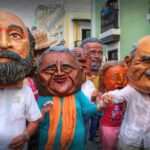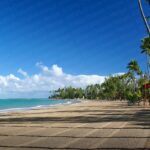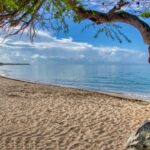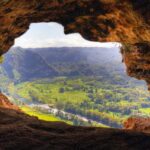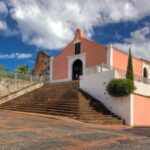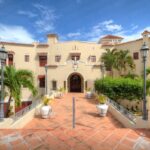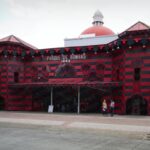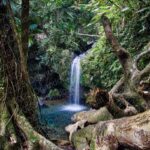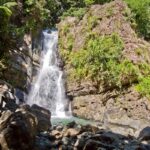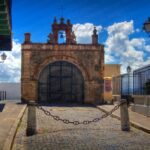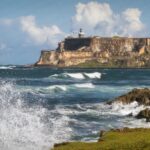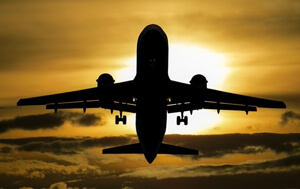
Welcome to Puerto Rico
It’s finally here! The mega post where we answer 45 of your most pressing questions about Puerto Rico has finally arrived! We went through the hundreds of emails asking about the Island and identified the most frequent.
These are questions that come to mind if you’re coming to Puerto Rico for a week or if you’re planning an extended stay. They’re questions about visiting Puerto Rico and about living here altogether.
Some are more sensitive than others, so you will find subjects in this post that many other travel blogs might skirt around.
However, like all things we do at Puerto Rico By GPS we’ve strived to keep it real and honest. Remember, we don’t sugar coat reality. We tell it like it is.
So sit back, relax, grab a cup of Puerto Rican coffee, or of your favorite beverage for that matter, and let’s dig in to “your questions about Puerto Rico answered.
Is It Easy To Travel To Puerto Rico?
Yes, it is easy to travel to Puerto Rico. It is a US territory, so US citizens do not need a passport to travel there. There are several daily flights from major US cities to San Juan, Puerto Rico’s capital. Once you arrive, transportation options include rental cars, taxis, and public transportation.
Is Puerto Rico Safe?
Puerto Rico is generally considered safe for tourists, but as with any destination, it is important to exercise caution and be aware of your surroundings. Some areas of the island may have higher crime rates than others, so it is a good idea to research the specific areas you plan to visit and take any necessary precautions. Additionally, it is always a good idea to be aware of local laws and customs, and to respect the culture of the place you are visiting.
Do I Need To Know Spanish To Visit Puerto Rico?
While it is not necessary to know Spanish to visit Puerto Rico, it can certainly be helpful. English is widely spoken on the island, particularly in the tourism industry, so many people in the service industry such as hotel staff, tour guides and restaurants will be able to communicate with you in English. However, Spanish is still the primary language spoken on the island, and you may find it useful to know some basic phrases if you plan to explore more rural or less touristy areas. Knowing Spanish can also be helpful when communicating with locals or navigating public transportation.
 Do I Need A Passport To Visit Puerto Rico?
Do I Need A Passport To Visit Puerto Rico?
No, you do not need a passport to visit Puerto Rico. Puerto Rico is a U.S. territory, so U.S. citizens can travel to the island with just a government-issued ID, such as a driver’s license. However, it is always a good idea to check the expiration date on your ID and make sure it will be valid for the duration of your trip. Non U.S citizens will need a valid passport and other possible visa requirements to enter Puerto Rico.
I’m Coming From South America. Do I Need A Visa To Visit Puerto Rico?
Citizens of South American countries may not need a visa to visit Puerto Rico as it is a U.S. territory. However, it’s always best to check with the U.S. Embassy or Consulate in your country or the Puerto Rican government for any updates or changes in the entry requirements. Generally, a valid passport and a return or onward ticket are required to enter Puerto Rico.
Some countries may also require a Tourist Card or ESTA (Electronic System for Travel Authorization) depending on the citizen’s nationality and the length of stay. Keep in mind that even though Puerto Rico is a U.S. territory, it has a separate immigration system and the rules may be different than traveling within the mainland US.
When Is The Best Time Of The Year To Visit Puerto Rico?
 The best time to visit Puerto Rico depends on personal preferences and travel goals. The island experiences a tropical climate, with temperatures ranging from the mid-70s to mid-80s year-round.
The best time to visit Puerto Rico depends on personal preferences and travel goals. The island experiences a tropical climate, with temperatures ranging from the mid-70s to mid-80s year-round.
For those seeking warm weather and beach activities, the peak tourist season is from December to April, when the weather is drier and less humid. This is also the time when most tourists visit, so prices and crowds are higher.
For those interested in outdoor activities such as hiking and exploring the island’s natural beauty, the summer months (May to November) are ideal, as the weather is warmer and more humid. This is also the time when Puerto Rico experiences the most rainfall, but the rain is often brief and tropical in nature.
For those looking for lower prices and fewer crowds, the shoulder season from May to November is a good option. In general, visitors can expect good weather and a relaxed atmosphere, with the added bonus of fewer tourists and lower prices for hotels and activities.
Regardless of the time of year, visitors to Puerto Rico can expect plenty of sunshine, warm temperatures, and a wide range of activities and attractions to enjoy.
Tell Me About The Weather. How Does It Vary Throughout The Year?
Puerto Rico has a tropical climate, with warm temperatures and high humidity year-round. The island experiences two main seasons: a rainy season and a dry season. The rainy season typically runs from April to November, with the heaviest rainfall typically occurring in September and October. The dry season runs from December to March, with the lowest rainfall during this time.
The average temperature in Puerto Rico is around 27–29 degrees Celsius (80–85 degrees Fahrenheit) throughout the year, with the hottest months being June, July and August. It can get hot and humid during the day, but usually, there’s a sea breeze that makes it more comfortable. The island also experiences occasional hurricanes, especially during the months of June to November, so it’s important to check the weather forecast and take necessary precautions if you are traveling during this time.
Overall, the weather in Puerto Rico is warm and pleasant, making it a great destination for a beach vacation or outdoor activities, but it’s important to be aware of the different seasons and their potential impact on your trip.
There’s a weather app on the top right corner of our website for your convenience. Right blow there’s a small banner that connects to the National Weather Service. Make sure to consult their site BEFORE leaving for the beach. The information about surf, underwater currents and riptides can save your life.
How About Driving. Is It As Crazy As They Say?
 Driving in Puerto Rico can be challenging for visitors, especially if they are not familiar with the local driving customs and road conditions. The traffic in the larger cities such as San Juan can be heavy, and drivers may not always follow the rules of the road or obey traffic signals.
Driving in Puerto Rico can be challenging for visitors, especially if they are not familiar with the local driving customs and road conditions. The traffic in the larger cities such as San Juan can be heavy, and drivers may not always follow the rules of the road or obey traffic signals.
Drivers in Puerto Rico tend to drive aggressively and are known for making sudden lane changes and passing on the shoulder. This can be dangerous for visitors who are not used to these driving habits. Additionally, many roads are in poor condition, with potholes and uneven surfaces.
It’s important to be aware of the local driving laws and customs, and to exercise caution when driving on the island. It’s also a good idea to rent a car with a GPS, as some roads can be poorly marked and it’s easy to get lost.
Alternatively, you can opt to use public transportation, such as buses, Taxis or Ubers, which can be a safer and more convenient option if you’re not comfortable driving.
For more information on this subject watch our video: “Driving In Puerto Rico”.
Are Traffic Fines Stiff?
Fines for traffic violations in Puerto Rico can be significant, and can increase if not paid within a certain period of time. Some examples of fines for common traffic violations include:
- Speeding: fines can range from $50 to $200
- Running a red light or stop sign: fines can range from $100 to $200
- Driving under the influence (DUI): fines can range from $500 to $1,000, and may also include jail time
- Using a cellphone while driving: fines can range from $50 to $200
- Not having liability insurance: fines can range from $500 to $1,000
It’s important to note that fines can vary depending on the specific violation and the discretion of the court. Additionally, it’s important to note that driving without a valid driver’s license can result in arrest and fines. I wrote an article titled: “46 Things To Know Before Driving In Puerto Rico”. I urge you to read it.
Are Roads Ok In Puerto Rico?
The quality of roads in Puerto Rico varies depending on the location and type of road. The island has a good network of highways and main roads that are generally well-maintained, however, some of the secondary roads and rural roads may be in poor condition.
The island has been affected by natural disasters such as hurricanes, which can cause damage to roads and infrastructure. After a severe storm, it may take some time for roads to be repaired and cleared.
Driving in Puerto Rico can be challenging, especially if you’re not used to driving on the left side of the road. The island’s roads can be quite narrow and winding, and the traffic can be heavy in some areas. Additionally, in some areas, roads may be poorly lit and lack clear signage, making it difficult to navigate.
However, the government and private companies have been working to improve the road infrastructure, and many major roads have been renovated and repaved.
If you’re planning to drive in Puerto Rico, it’s a good idea to familiarize yourself with the local traffic laws and regulations, and to take extra care when driving on unfamiliar roads. It’s also advisable to be prepared for unexpected road closures or detours, and to have a map or GPS navigation system to help you navigate.
Will My GPS Work In Puerto Rico?
 In general, GPS navigation systems should work in Puerto Rico as long as they are able to connect to a satellite signal. The island is located within the coverage area of the GPS satellite network, so most GPS devices should be able to function as normal.
In general, GPS navigation systems should work in Puerto Rico as long as they are able to connect to a satellite signal. The island is located within the coverage area of the GPS satellite network, so most GPS devices should be able to function as normal.
However, it’s always a good idea to check the coverage area and availability of your specific device before leaving for your trip, and bring a paper map as a backup.
It’s also important to note that in some rural and remote areas of the island, the GPS signal may be weaker or unavailable. Therefore, it’s best to download offline maps to your device, or bring a paper map as a backup in case you lose GPS signal.
Additionally, some areas of the island may have poor cellular coverage, so it’s a good idea to check with your cellular provider about coverage and roaming options before your trip. I made an entire video about this subject titled: “Does GPS Work In Puerto Rico”. Watch it.
Is It Hard Or Expensive To Rent A Car On The Island?
Renting a car in Puerto Rico is generally not difficult or overly expensive, but prices can vary depending on factors such as the type of vehicle and the rental agency.
There are several international and local rental car companies with locations at the main airports and in major cities throughout the island, so you should have no problem finding a rental car that suits your needs and budget.
Prices can vary depending on factors such as the type of vehicle, the length of the rental period, and the time of year. Generally, prices will be higher during peak tourist season and for luxury or larger vehicles. In general, you can expect to pay anywhere from around $30 to $80 per day for a basic economy car, and prices can go up to $150+ per day for a luxury car.
It’s always best to compare prices and check for any special deals or discounts that may be available before you book. It’s also important to check the rental company’s policy regarding additional charges, such as taxes, insurance, and other fees.
Keep in mind that driving in Puerto Rico can be challenging, and it’s a good idea to familiarize yourself with local traffic laws and customs before you hit the road.
Are Tolls Expensive In Puerto Rico When Compared With The United States?
Toll prices in Puerto Rico are generally less expensive when compared to tolls in the United States. The toll prices for cars vary depending on the road and location, and it can cost anywhere from around $0.50 to $3.00 for a one-way trip. Some of the main toll roads in Puerto Rico include the Teodoro Moscoso Bridge and the José de Diego Expressway. There are also some toll-free roads on the island.
It’s also worth noting that in Puerto Rico, tolls are typically paid in cash, although some toll plazas are now accepting credit and debit cards. Some rental car agencies also offer an option to include a transponder or TollPass in their rental package, which allows the renter to pay the tolls electronically.
It’s always a good idea to check the specific toll prices and payment methods for the roads you plan to travel on before your trip, and to bring enough cash or a credit/debit card with you to pay the tolls.
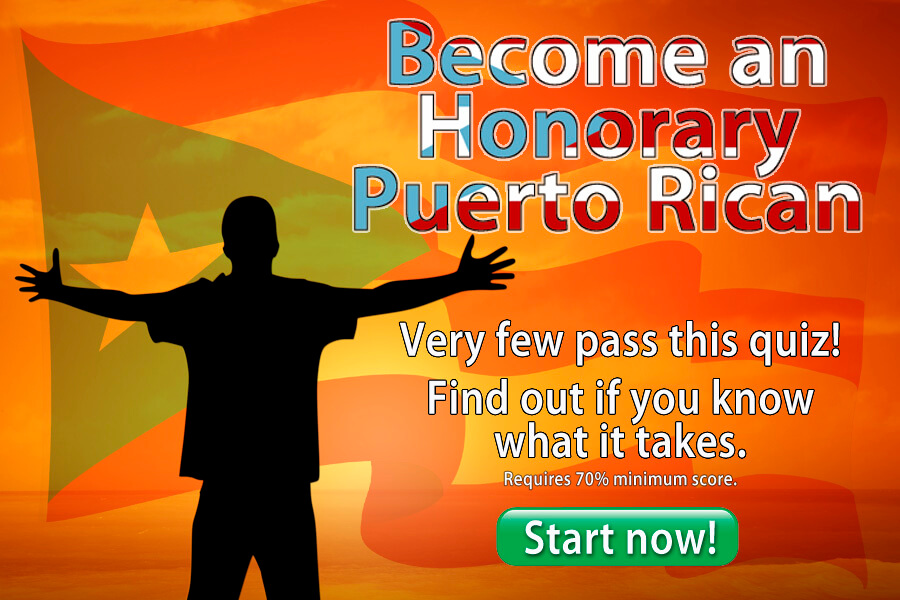
Is Gas Expensive In Puerto Rico When Compared To The United States?
Gas prices in Puerto Rico are generally more expensive when compared to the mainland United States. The cost of gasoline can vary depending on several factors, such as the location, the type of gasoline, and the market conditions. However, in general, you can expect to pay around 20–30 cents more per gallon than the average prices in the United States.
As of 2021, the average price for a gallon of regular gasoline in Puerto Rico is around $3.00, while the average price in the United States is around $2.50. Prices may fluctuate depending on the time of year, demand, and other market conditions.
It’s also worth noting that gasoline in Puerto Rico is sold in liters, not gallons, so you may need to make some conversions when filling up your tank.
It’s always a good idea to check the current gas prices before your trip and to fill up your tank before heading out on longer drives to avoid having to pay higher prices at remote locations.
How Good Is Public Transportation In Puerto Rico?
Public transportation in Puerto Rico is not as developed as in other places, but it is still possible to get around the island using buses and trains. The main mode of public transportation on the island is the bus system, which is operated by the government-run Transportation Authority (Autoridad de Transporte Urbano or ATU). The bus system is extensive, but it can be slow and unreliable at times. The train system is limited, with only one line connecting San Juan and Bayamón.
Additionally, taxis and ride-sharing services such as Uber and Lyft are widely available in the main cities and tourist areas. There is also a ferry service that connects San Juan with Cataño and Fajardo, but it is mainly used by commuters. Overall, while public transportation in Puerto Rico is not as convenient or efficient as in some other places, it is still a viable option for getting around the island.
Is The Food In Puerto Rico Any Good?
 Puerto Rican cuisine is a delicious blend of Spanish, African, and Taíno influences. The island is known for its flavorful dishes, many of which are based on locally grown ingredients. Some popular dishes include:
Puerto Rican cuisine is a delicious blend of Spanish, African, and Taíno influences. The island is known for its flavorful dishes, many of which are based on locally grown ingredients. Some popular dishes include:
- Lechon Asado: Roasted pig, often served at special occasions or parties.
- Mofongo: A dish made from mashed plantains and often filled with meat or seafood.
- Asopao: A thick soup made with chicken or seafood and rice.
- Tostones: Fried plantain slices that are a popular side dish.
- Arroz con Gandules: Rice with pigeon peas, a staple of Puerto Rican cuisine.
Puerto Rico is also known for its seafood, and it’s a great place to try fish and shellfish dishes. The island is also famous for its rum and coffee, both of which are produced locally and can be found in many restaurants and bars.
Puerto Rico is also home to a variety of restaurants that offer different types of cuisine, from local and international, to vegetarian and vegan options.
In summary, Puerto Rican cuisine is delicious and diverse, with a lot of variety and options to choose from. Whether you’re looking for traditional dishes or something more exotic, you’re sure to find something you’ll love.
For more information about this subject watch or video “Is Puerto Rican Food Any Good?” in the video section of this site.
How Safe Is The Water In Puerto Rico?
 The water in Puerto Rico is generally considered safe to drink and use, however, it is always a good idea to check the local water quality reports for the specific area you will be visiting.
The water in Puerto Rico is generally considered safe to drink and use, however, it is always a good idea to check the local water quality reports for the specific area you will be visiting.
The water supply in Puerto Rico is managed by the Puerto Rico Aqueducts and Sewers Authority (PRASA) and they have information on their website about the water quality in different regions of the island. If you are traveling to a more rural or less developed area, it may be best to drink bottled water or boil the water before consuming it.
Additionally, swimming in ocean water can be dangerous due to strong currents, so it is important to be aware of local swimming conditions and to always obey posted warning signs.
Which Are The Most Important Places To Visit In Puerto Rico?
- Old San Juan: The historic district of San Juan is a must-see for its colonial-era architecture, cobblestone streets, and lively atmosphere.
- Castillo San Felipe del Morro: This 16th-century fort offers breathtaking views of the ocean and the city, and it’s a must-see for history buffs.
- El Morro: This 16th-century fort offers a glimpse into Puerto Rico’s rich history and stunning views of the ocean.
- The San Juan Cathedral: The oldest cathedral in the Americas, it’s a beautiful example of Spanish colonial architecture, and it’s a must-see for history buffs.
- El Yunque National Forest: This lush tropical rainforest is home to a variety of plant and animal life and offers hiking trails, waterfalls and beautiful views.
- Bioluminescent Bays at “La Parguera”, “Mosquito Bay” and “Laguna Grande”: One of the most unique experiences in Puerto Rico, a visit to one of the island’s bioluminescent bays allows you to see the water glow at night.
- The Beaches: Puerto Rico has some of the best beaches in the Caribbean, such as Flamenco Beach in Culebra, Luquillo Beach and Playuela Beach.
- Ponce: The second-largest city in Puerto Rico, Ponce is known for its colonial-era architecture, museums, and lively arts scene.
- The Ponce Art Museum: The Ponce Art Museum has an impressive collection of European and Puerto Rican art, it’s a great place to learn more about the island’s artistic heritage.
- The Ponce Firefighters Museum: This museum is dedicated to the history and culture of firefighting in Puerto Rico, it’s a unique and interesting place to visit.
- The Bacardi Rum Distillery: Take a tour of the famous Bacardi rum distillery and learn about the history and production of the world-renowned brand.
- El Conquistador Resort, Palomino Island: This luxurious resort offers a variety of activities, such as swimming with dolphins, snorkeling, and kayaking.
These are just a few of the many amazing places to visit in Puerto Rico, as the island offers a variety of options for different interests and tastes, from history, culture, adventure, and nature. Here are a few photos to whet your appetite. Click on any of them to see them larger.
- San Sebastian Street Fiestas, Old San Juan
- Artisans Fir At San Sebastian Street Fiestas
- La Monserrate Beach, Luquillo
- Buyé Beach, Cabo Rojo
- Combate Beach, Cabo Rojo
- Los Morrillos Lighthouse, Cabo Rojo
- Cueva Ventana, Utuado
- Porta Coelli Chapel, San Germán
- El Vigía Cross, Ponce
- Serralés Castle, Ponce
- Historic Fire House, Ponce
- Historic Fire House, Ponce
- Juan Diego Falls, El Yunque National Forest
- La Mina Falls, El Yunque National Forest
- El Cristo Chapel, Old San Juan
- Fort San Cristóbal, Old San Juan
- Fort San Felipe del Morro, Old San Juan
- Fort San Felipe del Morro, Old San Juan
- La Rogativa, Old San Juan
- The Devil’s Sentry Box, Old San Juan
Is There A Crime Problem In Puerto Rico?
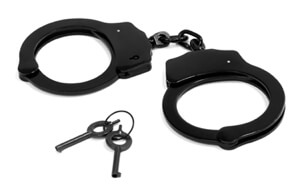 Puerto Rico, like many other places, does have a crime problem. However, crime rates have been decreasing in recent years. The island has seen a decrease in overall crime, including violent crime, property crime, and drug offenses. However, tourists should still take precautions to ensure their safety, such as avoiding deserted or poorly lit areas, staying in groups, and not leaving valuables in plain sight.
Puerto Rico, like many other places, does have a crime problem. However, crime rates have been decreasing in recent years. The island has seen a decrease in overall crime, including violent crime, property crime, and drug offenses. However, tourists should still take precautions to ensure their safety, such as avoiding deserted or poorly lit areas, staying in groups, and not leaving valuables in plain sight.
It is also important to note that certain areas of Puerto Rico may be more dangerous than others, and it’s always good to check with locals or touristic office to get a sense of which areas are best avoided. Also, it is important to note that the island is currently facing an economic crisis that has led to an increase in poverty, which can lead to more crime as well. It’s always good to stay informed and take the necessary precautions.
Why Are Young People Leaving The Island?
There are several reasons why young people in Puerto Rico are leaving the island. One of the main reasons is the island’s struggling economy. Puerto Rico has been in a state of economic crisis for several years, with high levels of unemployment, government debt, and poverty. This has made it difficult for young people to find good jobs and secure a stable future on the island.
Another reason is the lack of opportunities and resources in Puerto Rico. The island has a limited number of higher education institutions, and many young people feel that they need to leave the island to pursue their education and career goals. Also, many young people feel that there are limited opportunities for professional development and career growth in Puerto Rico, particularly in fields such as technology, healthcare, and finance.
Additionally, the island has been hit by several natural disasters in recent years, such as Hurricane Maria in 2017, which has further damaged the economy and infrastructure of the island and made it difficult for people to rebuild their lives.
Finally, many young people want to experience different cultures, languages and opportunities, and leaving the island is one way to do that.
How about healthcare? What happens if I get sick?
 Healthcare in Puerto Rico is generally considered to be of good quality, however, like in many places, it has its own set of challenges. The island has a public healthcare system, which is funded by the government and is available to all residents, regardless of their income level. The public system offers a wide range of services, including primary care, specialist care, and hospital services.
Healthcare in Puerto Rico is generally considered to be of good quality, however, like in many places, it has its own set of challenges. The island has a public healthcare system, which is funded by the government and is available to all residents, regardless of their income level. The public system offers a wide range of services, including primary care, specialist care, and hospital services.
However, the public healthcare system has been facing financial difficulties in recent years, which has led to shortages of medical supplies, long wait times for appointments, and limited access to certain services.
Additionally, many private hospitals and clinics are available in the main cities and tourist areas, which can provide a higher level of care and shorter wait times. However, these private facilities may be more expensive and may not accept certain types of insurance.
If you are a tourist visiting Puerto Rico and you get sick, it is important to have adequate travel insurance that covers medical expenses. You should also keep your passport and insurance information with you at all times, in case you need to visit a hospital or clinic.
In case of emergency, you can dial 911 to contact emergency services. It’s also important to know that most hospitals and clinics in Puerto Rico speak Spanish, so it’s good to have a translator or a bilingual person with you if you do not speak the language.
Why Are Puerto Ricans U.S. Citizens? How Did That Happen?
Puerto Ricans are American citizens because Puerto Rico is an unincorporated territory of the United States. This means that the island is under the jurisdiction of the United States, but it is not part of the country in the same way that states are.
Puerto Rico became a territory of the United States in 1898, as a result of the Spanish-American War. The island was ceded to the United States by Spain in the Treaty of Paris. Since then, Puerto Rico has been governed by the United States through a series of laws and policies, including the Jones-Shafroth Act of 1917 which granted American citizenship to Puerto Ricans.
Puerto Rico has been a U.S. territory for over a century, but it still maintains its own government and culture. Puerto Ricans have been granted certain rights as American citizens, such as the right to vote in presidential primary elections, but they do not have the same rights as citizens living in the 50 states, such as the right to vote in presidential elections or to have voting representation in Congress.
In recent years, there have been ongoing debates and discussions about the status of Puerto Rico and whether it should become the 51st state, become independent, or maintain its current status. It remains a complex and nuanced issue with different opinions.
Are Puerto Ricans Friendly?
Puerto Ricans are generally considered to be friendly and welcoming people. The island has a rich culture and history, and the people are proud of their heritage. They are known for their warmth and hospitality and are often eager to share their culture and traditions with visitors.
Puerto Ricans are known for being outgoing and sociable, and they enjoy spending time with friends and family. They often gather together to celebrate special occasions and holidays, and they are known for their love of music, dance, and good food.
Puerto Ricans are also known for their kindness and generosity, and they are often willing to help others in need. They have a strong sense of community and many people volunteer their time and resources to help their neighbors and those less fortunate.
It’s important to note that like any place, the friendliness and hospitality of people can vary depending on individual and situation. However, in general, tourists can expect to be welcomed warmly and find friendly people in Puerto Rico. I made a video about this very subject titled: “7 Facts About Puerto Rico and the Puerto Ricans”. For more information click on the link or visit the video section of this blog.
Is Racism An Issue In Puerto Rico?
 Like in any other place, racism can be an issue in Puerto Rico, although it’s not as prevalent as in some other countries.
Like in any other place, racism can be an issue in Puerto Rico, although it’s not as prevalent as in some other countries.
Puerto Rico is a culturally diverse society, with a mix of different ethnicities and races. The population is primarily of African and Taíno descent, with a significant portion of European and Asian ancestry. Historically, there have been instances of discrimination and prejudice towards certain groups, but over time, Puerto Rico has become a more inclusive and accepting society.
However, it’s important to note that racism can take different forms and it’s not always visible. It can take the form of microaggressions, stereotypes, and discrimination in the workplace, housing and education.
Puerto Rico has laws and policies in place to combat discrimination and racism. The government has also implemented programs to promote diversity and inclusion, and to educate people about the importance of treating everyone with respect and kindness.
It’s also important to note that, as a tourist, you should be aware of and respectful of local customs and traditions. It’s always a good idea to educate yourself about the culture and history of the place you’re visiting, and to be mindful of your actions and words, to avoid any unintentional offense.
Is Electrical Power Reliable In Puerto Rico?

The reliability of electrical power in Puerto Rico has been a concern in recent years. The island’s electrical grid has been plagued by a number of issues, including aging infrastructure, lack of maintenance, and a lack of investment in new power generation. These issues have been compounded by natural disasters, such as hurricanes, which have caused widespread power outages.
In the past, power outages were a common occurrence in Puerto Rico, with some areas experiencing frequent blackouts. However, in recent years, the government and private companies have been working to improve the reliability of the electrical power system. They have been upgrading infrastructure, increasing the use of renewable energy sources, and improving emergency response plans to help mitigate the impact of future storms.
Despite these efforts, it’s important to note that the power system is still fragile and power outages can still happen, particularly in the aftermath of natural disasters such as hurricanes.
If you’re planning to visit Puerto Rico, it’s advisable to have a plan in case of power outages, such as having a backup source of power for your electronics, and having contact information for local emergency services. Also, it’s a good idea to check the weather forecast and any travel warnings before your trip, as severe weather conditions can affect power reliability.
Is Camping Safe In Puerto Rico?
Camping in Puerto Rico can be a safe and enjoyable experience, however, as with any outdoor activity, it’s important to take necessary precautions to ensure your safety.
Puerto Rico has a wide variety of camping options, including developed campgrounds with amenities such as toilets and showers, as well as backcountry camping in more remote areas.
When camping in Puerto Rico, it’s important to be aware of the local weather conditions and to be prepared for any severe weather that may occur. The island is located in the Caribbean, so it’s vulnerable to tropical storms and hurricanes, especially during the hurricane season which runs from June to November. It’s important to check the weather forecast and any travel warnings before your trip, and to have a plan in case of severe weather.
Campers should also be aware of their surroundings and be prepared for the local wildlife and insects, such as mosquitoes and ants. Campers should take necessary precautions to protect themselves from insect bites and other hazards.
Additionally, it’s important to be aware of local laws and regulations regarding camping and to obtain any necessary permits or permissions before setting up camp. It’s also important to properly store food and trash to avoid attracting wild animals.
Finally, It’s a good idea to let someone know your camping plans and to have a means of communication with you at all times in case of an emergency.
Are Mosquitos An Issue In Puerto Rico?
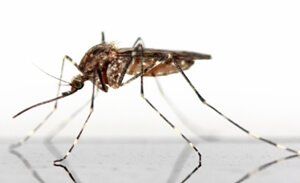 Mosquitoes can be an issue in Puerto Rico, especially during certain times of the year. The island is located in the Caribbean, which has a warm and humid climate that is conducive to the breeding of mosquitoes.
Mosquitoes can be an issue in Puerto Rico, especially during certain times of the year. The island is located in the Caribbean, which has a warm and humid climate that is conducive to the breeding of mosquitoes.
The most common species of mosquitoes in Puerto Rico are the Aedes aegypti and Aedes albopictus, which can carry diseases such as dengue fever, chikungunya, and Zika virus. These diseases are more prevalent during the rainy season, which runs from May to November.
To protect yourself from mosquito bites, it is recommended to use insect repellent, wear long sleeves and pants, and use air conditioning or screens on windows and doors to keep mosquitoes out of your living space.
The government also has programs to control the mosquito population, such as fumigation, and public education campaigns to prevent the breeding of mosquitoes.
It is important to be aware of the risk of mosquitoes and to take appropriate precautions when traveling or living in Puerto Rico. It is also important to take note of any travel alerts or warnings regarding mosquito-borne diseases before your trip.
What About Restrictions? Am I Required To Have Proof Of Covid-19 Vaccination?
As of my training data (2021), there were no specific travel restrictions for Puerto Rico related to Covid-19, but travelers may be required to present proof of a negative COVID-19 test taken within 72 hours prior to arrival or proof of recovery from COVID-19. It is advisable to check with local authorities and airlines for up-to-date information and requirements, as this can change frequently.
I Hear That There Are Alligators, Snakes And Other Predators On The Island. Is That True?
 Puerto Rico is home to a diverse range of wildlife, but alligators and other predatory animals are not commonly found on the island.
Puerto Rico is home to a diverse range of wildlife, but alligators and other predatory animals are not commonly found on the island.
While there are no wild alligators in Puerto Rico, there are some in captivity, such as in zoos, wildlife parks and some private collections.
The island does have a small population of crocodiles, which are found in the wetlands and coastal areas of the island, but they are considered a endangered species and are protected by law, and not considered a threat to the public.
There are also some other animals that can be considered predators in Puerto Rico, such as snakes and some birds of prey, but they are not commonly found and do not present a significant threat to humans.
However, if you are planning to go hiking or camping in more remote or wilderness areas of the island, it’s always a good idea to be aware of your surroundings and take necessary precautions to ensure your safety, such as carrying a first-aid kit and a means of communication.
Can I Fly My Drone In Puerto Rico?
 Yes, you can fly your drone in Puerto Rico, but you need to follow the regulations set by the Federal Aviation Administration (FAA) and the local laws.
Yes, you can fly your drone in Puerto Rico, but you need to follow the regulations set by the Federal Aviation Administration (FAA) and the local laws.
The FAA has designated airspace in Puerto Rico as Class B, C, D, E and G, which means that drone pilots must follow the rules for flying in controlled airspace. You are also required to obtain a Remote Pilot Certificate from the FAA, and to register your drone if it weighs more than 0.55 pounds and less than 55 pounds.
It is also important to note that flying your drone over certain places is prohibited, such as over people, airports, and military bases. You should also check if there are any specific regulations in the area where you plan to fly your drone, such as national parks or protected wildlife areas.
In addition, it’s always important to be aware of your surroundings and to fly your drone responsibly and safely, in a way that respects the privacy of others and does not cause any harm or disruption to people or property.
What About Photography? Do The Same Rules Apply As In The United States?
The rules for photography in Puerto Rico are generally similar to those in the United States. In general, photography is allowed in public spaces, and you do not need permission to take photographs of people, buildings, and landmarks in public areas. However, you should always be respectful of people’s privacy, and avoid photographing people in a way that makes them feel uncomfortable or without their consent.
It’s also important to note that there are some restrictions on photography in certain areas such as government buildings, military bases, and airports, where photography may be prohibited or require permission. It’s always a good idea to check the rules and regulations of a specific location before taking photographs there.
Additionally, you should also be aware of any cultural or social customs that might restrict or regulate photography in certain areas. For example, it’s generally considered disrespectful to take photographs of religious or sacred sites without permission.
It’s also important to mention that it’s illegal to use a drone to photograph or record someone in a private place where they have a reasonable expectation of privacy.
Finally, it’s always a good idea to be respectful of the environment and to avoid disturbing wildlife or causing damage to natural areas when taking photographs.
Are Museums In Puerto Rico Any Good?
Puerto Rico has a number of museums that highlight its rich history, culture, and art. Whether you’re interested in art, history, or science, there are several museums in Puerto Rico that are worth visiting. Some of the most popular museums in Puerto Rico include:
- Museo de Arte de Ponce: This museum has a large collection of European art, including works by El Greco, Rubens, and Titian, as well as Puerto Rican art.
- Museo de Arte Contemporáneo de Puerto Rico: This museum is dedicated to contemporary art and features works by artists from Puerto Rico and the Caribbean.
- Museo del Niño: This museum is designed for children and features interactive exhibits that teach children about science and technology.
- Museo de las Américas: This museum explores the history and culture of the Americas, with an emphasis on Puerto Rican culture and history.
- Casa Blanca: This is the oldest Spanish colonial residence in San Juan and is now a museum that tells the story of the island’s history and culture.
- Castillo San Felipe del Morro: This is a 16th-century fortress that sits on a rocky promontory and offers great views of the ocean and the city.
- Museo de Arte de San Juan: This museum is dedicated to contemporary art and features works by Puerto Rican and Caribbean artists.
- Museo de Historia, Antropología e Historia: This museum offers a glimpse into the island’s past, from the Taíno Indians to the arrival of the Spanish.
- Museo de Arte de la Universidad de Puerto Rico: This museum features a collection of Puerto Rican and Caribbean art and is located on the campus of the University of Puerto Rico in Río Piedras.
- Museo de Arte de Puerto Rico: this museum has a collection of contemporary art, including works by Puerto Rican and Caribbean artists, as well as international artists.
These are just a few examples of the many museums in Puerto Rico that you can visit. Each of these museums offers a unique perspective on the island’s culture and history, and can be a great way to learn more about Puerto Rico.
What Is The General Education Level Of Puerto Ricans
The general education level of Puerto Ricans varies. According to data from the U.S. Census Bureau, about 89% of the population aged 25 and older have completed high school, and about 25% have a bachelor’s degree or higher. These numbers are similar to the national averages for the United States.
However, educational attainment in Puerto Rico tends to be lower in certain areas, particularly in rural and low-income communities. Additionally, the quality of education in Puerto Rico has been a topic of concern in recent years. There have been reports of inadequate funding, outdated curriculum, and a shortage of qualified teachers. Efforts have been made to improve education in the island, such as educational reform and investment in infrastructure and technology.
Are Puerto Ricans Bilingual?
Puerto Rico has a unique linguistic landscape, with Spanish as the dominant language, but English also widely spoken, especially in the business and tourism sectors. This is a result of the island’s history, which has seen it come under Spanish, American, and even British rule.
The Spanish language in Puerto Rico is heavily influenced by local dialects, which can vary depending on the region. Additionally, the island has a significant Afro-Puerto Rican community, which has contributed to a creole language known as “Neo-African,” which is spoken by some people.
While Spanish is the primary language spoken in Puerto Rico, many people, especially in urban areas, are fluent in English, as it is taught in schools and widely used in the media and official communications. In fact, English proficiency is considered to be a key asset for young Puerto Ricans when seeking jobs in the US mainland or in the international marketplace.
In summary, many Puerto Ricans are bilingual and able to speak and understand both Spanish and English, but the proficiency level in English varies among people. Additionally, some people speak other languages, but it’s less common.
What About Cellular Coverage? Is It Any Good?
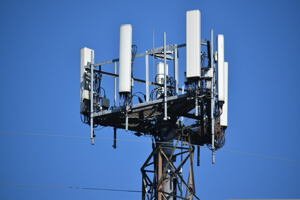 Cellular coverage in Puerto Rico is generally considered to be good, with all of the major US carriers (AT&T, Verizon, T‑Mobile, and Sprint) providing service on the island. Most of the island is covered by 3G and 4G networks, although coverage can be spotty in some rural or mountainous areas.
Cellular coverage in Puerto Rico is generally considered to be good, with all of the major US carriers (AT&T, Verizon, T‑Mobile, and Sprint) providing service on the island. Most of the island is covered by 3G and 4G networks, although coverage can be spotty in some rural or mountainous areas.
Puerto Rico’s telecommunications infrastructure was severely damaged by Hurricane Maria in 2017, which caused widespread power outages and damage to cell towers. The recovery and repair efforts have been ongoing since then, and most of the island now has stable cellular coverage.
However, if you’re planning to travel to remote areas of the island, it’s a good idea to check with your carrier about coverage in those specific locations. Additionally, if you’re using a phone or other device that is locked to a specific carrier, you should check with that carrier to ensure that your device will work in Puerto Rico.
In summary, cellular coverage in Puerto Rico is generally good, but it can vary depending on location and carrier.
Are Hotels Any Good? Are They Expensive?
Puerto Rico offers a wide variety of hotel options, from budget-friendly inns and guesthouses to luxurious resorts. The cost of hotels can vary depending on location, time of year, and amenities offered. In general, hotels in the major tourist areas such as San Juan and the surrounding areas tend to be more expensive than those in other parts of the island.
San Juan, the capital city of Puerto Rico, offers a wide variety of hotels, from budget-friendly inns and guesthouses to luxurious resorts. Many of the hotels in San Juan are located in historic buildings, such as former Spanish forts and colonial mansions, which adds to the city’s charm.
If you’re looking for a more secluded and relaxing vacation, there are also many hotels and resorts located in the island’s beautiful beaches, such as Isla Verde, Condado, and Rincón. These hotels tend to be more expensive than those in the city but offer spectacular ocean views and easy access to the beach.
Rates for hotels can vary depending on the time of year and the type of room you choose. during peak travel seasons such as Christmas, New Year’s and summer, rates are higher than during the low season.
In summary, there are many hotel options available in Puerto Rico, with prices varying depending on location and amenities. San Juan and the surrounding areas tend to be more expensive than other parts of the island, but there are budget-friendly options available.
I Hear That Puerto Ricans Are Very Physical People. Is That True?
Puerto Ricans are known for being an active and physical people, many enjoy sports and outdoor activities such as hiking, swimming, and playing basketball and baseball. Fitness is also a popular activity, with many gyms and fitness centers available on the island. Additionally, traditional dance and music, such as salsa and reggaeton, are an important part of Puerto Rican culture and many people participate in dance classes or attend dance events. Overall, it’s true that physical activity and sports are an important aspect of Puerto Rican culture, many people are active and engage in physical activities regularly.
How About In Terms Of Space? Is It True That They Tend To Touch And Hug A Lot?
Puerto Ricans are known for being a friendly and warm culture, and physical touch is often used as a way to express affection and camaraderie. It is common for people to hug and touch each other when greeting or saying goodbye. This physicality is seen as a sign of warmth and closeness, rather than an invasion of personal space. So it is true that Puerto Ricans tend to touch and hug a lot and it is a normal and natural behavior for them.
Are Drinking And Smoking Frowned Upon?
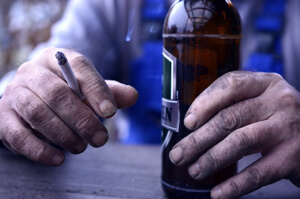 Drinking and smoking are not frowned upon in Puerto Rico and are widely accepted in social settings. However, as in any other place, it is important to know that excessive drinking and smoking can have negative consequences and is not encouraged. Public drunkenness and smoking in non-smoking areas is not allowed, and there are laws and penalties in place to enforce this. But in general, drinking and smoking are not stigmatized in Puerto Rico and people can drink and smoke in social places like bars, clubs, and restaurants, and also in some private events.
Drinking and smoking are not frowned upon in Puerto Rico and are widely accepted in social settings. However, as in any other place, it is important to know that excessive drinking and smoking can have negative consequences and is not encouraged. Public drunkenness and smoking in non-smoking areas is not allowed, and there are laws and penalties in place to enforce this. But in general, drinking and smoking are not stigmatized in Puerto Rico and people can drink and smoke in social places like bars, clubs, and restaurants, and also in some private events.
How About Weed And Drugs?
 The use and possession of marijuana, also known as grass, is illegal in Puerto Rico. Penalties for possession of small amounts of marijuana can include fines and jail time. The use and possession of other illegal drugs is also prohibited in Puerto Rico and can result in severe penalties, including fines and imprisonment. The use and possession of illegal drugs is taken seriously by law enforcement and is strictly enforced.
The use and possession of marijuana, also known as grass, is illegal in Puerto Rico. Penalties for possession of small amounts of marijuana can include fines and jail time. The use and possession of other illegal drugs is also prohibited in Puerto Rico and can result in severe penalties, including fines and imprisonment. The use and possession of illegal drugs is taken seriously by law enforcement and is strictly enforced.
It is important to note that drug-related crime is a problem in Puerto Rico, so being caught with drugs can put you in danger and is not advisable.
It is important to be aware of the laws and risks associated with drug use when visiting Puerto Rico.
What Are The Main Differences Between The American And Puerto Rican Cultures?
Puerto Rico is a unique blend of cultures, with strong Taíno, African, and Spanish influences. The island has its own distinct language, cuisine, music, and customs. Puerto Ricans are very proud of their culture and are known for their hospitality and friendliness. They often have a strong sense of family and community, and place a high value on tradition and history. In terms of language, Spanish is the most widely spoken language on the island, but most people also speak English.
In terms of lifestyle, Puerto Rico is known for its laid-back and relaxed atmosphere, which is reflected in the island’s famous “island time” mentality. People tend to move at a slower pace and place a high value on enjoying life.
Puerto Rico is known for its tropical climate, beautiful beaches, and diverse landscapes. The island is home to a rich variety of flora and fauna, as well as a vibrant arts and music scene.
In terms of cuisine, Puerto Rican food is a delicious blend of Spanish, African, and Taíno influences. It is known for its use of spices, fresh seafood, and tropical fruits.
On the other hand, American culture is more individualistic, fast-paced and more focused on technology. The American culture is also known to be more formal, and people tend to be more reserved and less physically demonstrative. The United States also places a high value on innovation, progress, and individual achievement.
Is Spanish In Puerto Rico Heavily Influenced By Slang?
Puerto Rico has its own variant of Spanish, known as “Puerto Rican Spanish,” which is influenced by the island’s history and culture. It is similar to other Spanish dialects spoken in the Caribbean and Central America, and it has some influences from indigenous languages, African languages, and English. It may also contain words and phrases that are specific to Puerto Rico and the Caribbean. Some people might use more slang than others, but it is generally considered to be more informal and casual than the Spanish spoken in Spain.
Please tell me more
Puerto Rican Spanish, also known as “Puerto Rican Creole,” is a unique blend that has been heavily influenced by the island’s history and culture. It is similar to other Caribbean Spanish dialects, and incorporates elements of African and Taíno languages, as well as English. Some of the most notable features of Puerto Rican Spanish include the use of “ustedes” instead of “vosotros,” and the use of “b” and “v” interchangeably. Additionally, there is a lot of slang used in everyday conversation, known as “Spanglish” and “Pachuco” language, which is a mix of Spanish and English, and it is also heavily influenced by local slang, it can be hard to understand for non-native speakers.
What Do People That Have Visited Puerto Rico Usually Say About It?
While overall, many people have positive experiences in Puerto Rico, there are some common complaints as well. Some tourists mention that the infrastructure, particularly roads and highways, can be in poor condition and congested, making travel and transportation more difficult. They also say that some areas of the island can be unsafe, with higher crime rates in some urban areas, leading some visitors to be wary and to take extra precautions when traveling.
Additionally, some visitors are disappointed by the level of poverty and poverty-related issues, such as homelessness and litter, that they see in some parts of the island, which can detract from the overall experience. The economic and financial crisis that Puerto Rico has faced in recent years has contributed to these issues, and tourists may be unprepared for the extent of these problems.
Finally, some tourists find the prices for goods and services to be higher than they expected, particularly in tourist areas. This is due to the fact that tourism is a significant part of the local economy, and prices are often set accordingly. These high prices can be a shock for visitors who are not expecting it, especially if they are traveling on a budget.
It is important to note that these complaints are not representative of the entire island and many visitors still have a great time in Puerto Rico despite these issues. By researching their destination and being aware of any potential challenges, travelers can have a positive and memorable experience in Puerto Rico.
Visitors to Puerto Rico often say that it is a beautiful and culturally rich destination, with gorgeous beaches, lush rainforests, and historic sites. They also mention the friendly and hospitable people, and the delicious local cuisine. Some people say that Puerto Rico has a vibrant nightlife and a thriving arts scene, with a mix of Spanish, African, and indigenous influences. Others highlight the island’s natural beauty and abundance of outdoor activities, such as hiking, snorkeling, and wildlife watching. Overall, many visitors have positive things to say about their experiences in Puerto Rico.
What Do They Say About The Service?
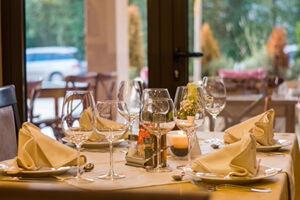 Visitors to Puerto Rico often praise the service they receive from locals, particularly in the hospitality and tourism industries. Many tourists mention the friendly and welcoming nature of the people they encounter, with many going out of their way to make visitors feel at home. This is a reflection of the strong cultural emphasis on hospitality and warmth that is a hallmark of Puerto Rican society.
Visitors to Puerto Rico often praise the service they receive from locals, particularly in the hospitality and tourism industries. Many tourists mention the friendly and welcoming nature of the people they encounter, with many going out of their way to make visitors feel at home. This is a reflection of the strong cultural emphasis on hospitality and warmth that is a hallmark of Puerto Rican society.
Some visitors also highlight the high quality of service they receive at hotels, restaurants, and other tourist-related businesses. Many establishments take pride in their reputation for good service, and make an effort to ensure that visitors have a positive experience.
That being said, service can vary and some tourists report inconsistent or slow service at some businesses. This can be due to understaffing or simply a lack of experience in serving tourists. However, overall, the level of service in Puerto Rico is generally regarded as good by visitors.
Conclusion
Summarizing 500+ years of history and culture into a blog article, no matter how long, is a tall order. There are obviously aspects that we’ve left out, albeit inadvertently. I you have specific questions about any subject please contact us and we’ll address them in a future post.
©2023,Orlando Mergal, MA
____________________
Bilingual Content Creator, Blogger, Podcaster,
Author, Photographer and New Media Expert
Tel. 787–750-0000, Mobile 787–306-1590
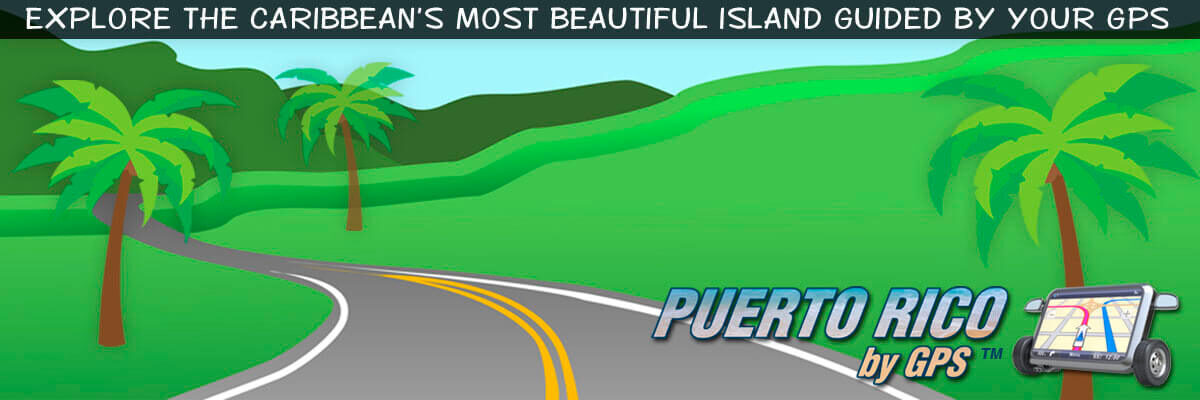
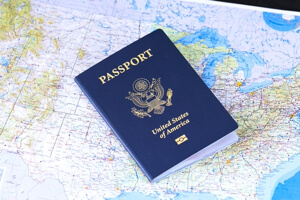 Do I Need A Passport To Visit Puerto Rico?
Do I Need A Passport To Visit Puerto Rico?